Laser diodes are a type of semiconductor light source that was first developed in the 1960s. They are also known as laser diodes, with "LASER" standing for Light Amplification by Stimulated Emission of Radiation. These devices are commonly referred to as LDs. One of their most significant characteristics is high coherence, meaning they produce light with the same wavelength and phase. In the early days, laser diodes could only emit low-power red light, which was used as an indicator light by companies like HP.
Below are some common physical layouts and internal connection diagrams of laser diodes found in the market:
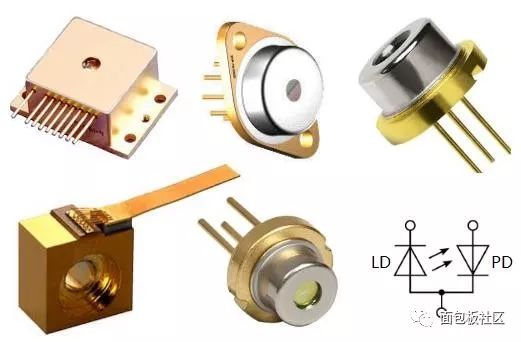
**Working Principle**
The working principle of a laser diode can be illustrated as follows: The PN junction within a laser diode is formed by two doped gallium arsenide layers. These layers have two flat ends, one of which is highly reflective (mirrored), while the other is partially reflective. The wavelength of the emitted light depends on the length of this junction.
When a forward voltage is applied, electrons move across the junction and recombine with holes, releasing photons. These photons stimulate more photon emission through a process called stimulated emission. As the current increases, more photons are generated. Some of these photons travel between the reflective surfaces, bouncing back and forth until they reach the threshold level necessary for lasing.
During this process, the number of photons increases rapidly due to the avalanche effect, resulting in a coherent and intense laser beam. All photons produced during this process have the same energy, phase, and frequency. Therefore, the emitted light has a single wavelength. To generate a laser beam, the current must exceed a certain threshold. Below this level, the device behaves more like an LED, emitting incoherent light.
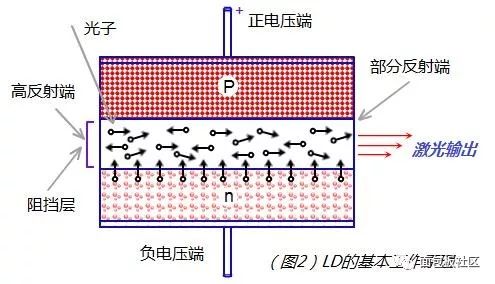
In simpler terms, the light generated by the injection current is reflected between two mirrors until it reaches the oscillation state. Essentially, a laser diode can be considered a light-emitting diode (LED) that amplifies light using mirrors.
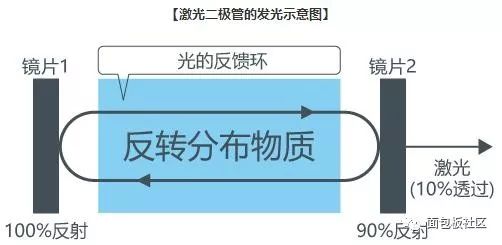
**Internal Structure**
The following diagram shows the general structure of a typical laser diode:
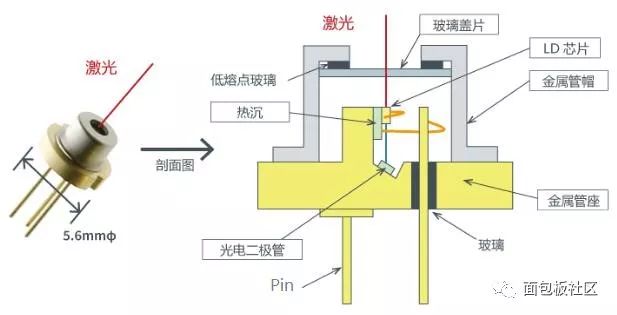
As shown, a laser diode consists of four main parts:
1. **Laser Emitting Part (LD):** This is where the laser light is generated.
2. **Photodiode (PD):** Used to monitor the output of the LD. It helps regulate the laser’s performance and is often connected to the same electrode as the LD.
3. **Glass Cover Lens:** Protects the internal components and serves as part of the resonant cavity.
4. **Metal Casing:** Provides mechanical support, shielding from external interference, and heat dissipation.
**Classification**
Laser diodes are essentially semiconductor devices. Depending on the materials used in the PN junction, they can be categorized into homojunction, single heterojunction (SH), double heterojunction (DH), and quantum well (QW) types. Quantum well lasers offer lower threshold currents and higher output power, making them the most widely used today. Materials such as AlGaAs, InGaAlP, InGaN, and ZnO are commonly used, while silicon is unsuitable due to its poor light conversion efficiency.
**Main Technical Parameters**
1. **Wavelength:** Common wavelengths include 635 nm, 650 nm, 670 nm, 690 nm, 780 nm, 810 nm, 860 nm, and 980 nm.
2. **Threshold Current (Ith):** The minimum current required to initiate lasing. For low-power lasers, this is typically tens of milliamperes.
3. **Operating Current (Iop):** The current at which the laser achieves its rated output power.
4. **Operating Voltage (Vop):** The forward voltage needed to emit the desired optical output.
5. **Optical Output Power (Po):** The maximum allowable optical power output.
6. **Dark Current (Id):** The leakage current when the photodiode is reverse-biased.
7. **Differential Efficiency (η):** The rate at which light output increases with drive current.
8. **Vertical Divergence Angle (θ⊥):** Typically around 15°–40°.
9. **Horizontal Divergence Angle (θ∥):** Usually between 6°–10°.
10. **Monitoring Current (Im):** The current measured by the built-in photodiode when the laser is operating at full power.
**Injection Current vs. Light Output (IL) Characteristics**
The IL curve illustrates the relationship between the injection current and the light output. When the gain exceeds losses, lasing occurs, creating a threshold current. The maximum output is limited by factors like kink, COD, and thermal saturation.
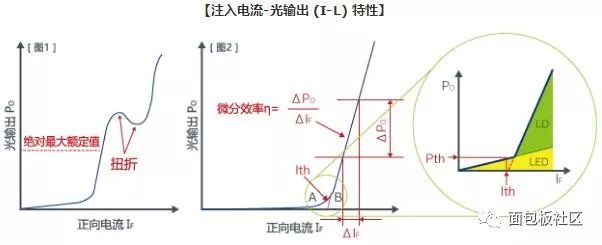
To measure the optical output, an optical power meter is used. The detector surface is angled slightly to prevent reflections from returning to the laser diode.
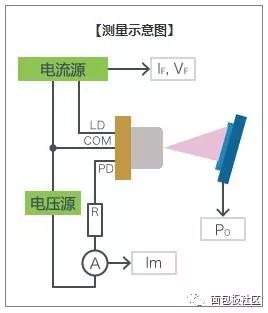
Note: Temperature significantly affects measurements, so a heat sink and temperature controller should be used.
**Laser Diode Drive**
Laser diodes are compact, energy-efficient, and easy to modulate. However, they are sensitive to overcurrent, overvoltage, and electrostatic discharge. Common driving methods include using a constant current source, series resistor with parallel capacitor, proper heat dissipation, and anti-parallel diodes for protection.
An APC (Auto Power Control) circuit is often used to maintain stable output power by monitoring the PD signal. A simple APC circuit is shown below:
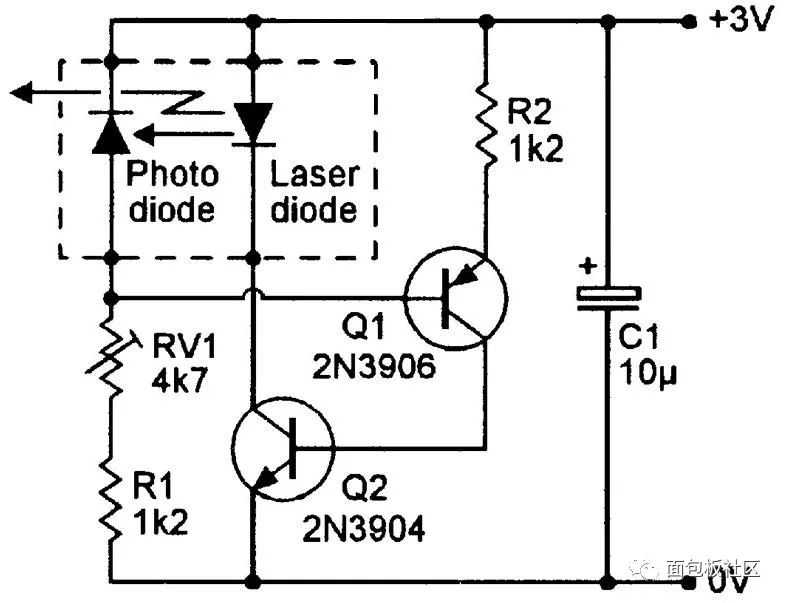
**Difference with LEDs**
Laser diodes differ from LEDs in several ways, including narrower spectral width, better coherence, and higher directivity. The table below summarizes the key differences:
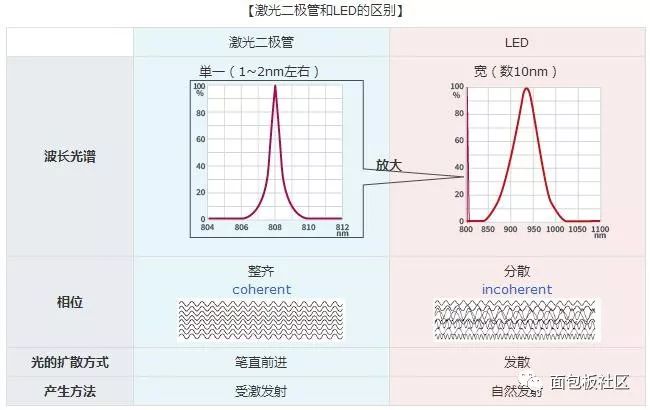
**Application Areas**
Laser diodes are used in a wide range of applications, such as computer optical drives, laser printers, barcode scanners, scientific instruments, laser ranging, medical treatments, fiber optics, stage lighting, cutting, and even weapons.
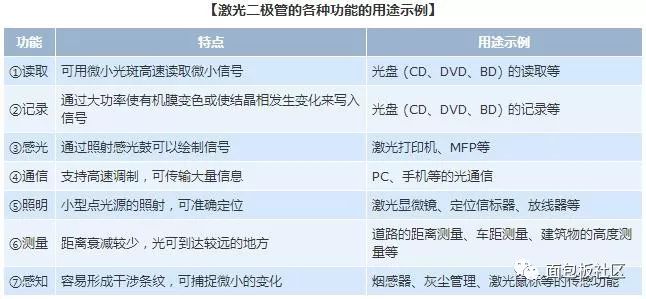
**Usage Precautions**
1. Laser light can damage the eyes. Never look directly at the end face or view it through lenses or mirrors.
2. Laser diodes are highly sensitive to ESD. Proper anti-static measures should be taken.
3. Store and operate in clean environments. Avoid touching the lens-like end face.
4. High temperatures increase threshold current and reduce performance. Monitor output with an optical power meter.
5. Exceeding rated power accelerates aging.
6. Ensure proper cooling and keep temperature below 20°C.
7. Use anti-static wristbands when handling.
8. Operating current and temperature affect the output wavelength. Maintain good heat dissipation.
**Conclusion**
Laser diodes are versatile and powerful devices with a wide range of applications. Understanding their operation, structure, and limitations is essential for safe and effective use.
**Source: Breadboard Community**
Withstand high voltage up to 750V (IEC/EN standard)
UL 94V-2 or UL 94V-0 flame retardant housing
Anti-falling screw
Optional wire protection
1~12 poles, dividable as requested
Maximum wiring capacity of 4 mm2
4 mm² Terminal Blocks,high quality terminal strips,BELEKS T04 series terminal connectors,3 amp connector strips
Jiangmen Krealux Electrical Appliances Co.,Ltd. , https://www.krealux-online.com